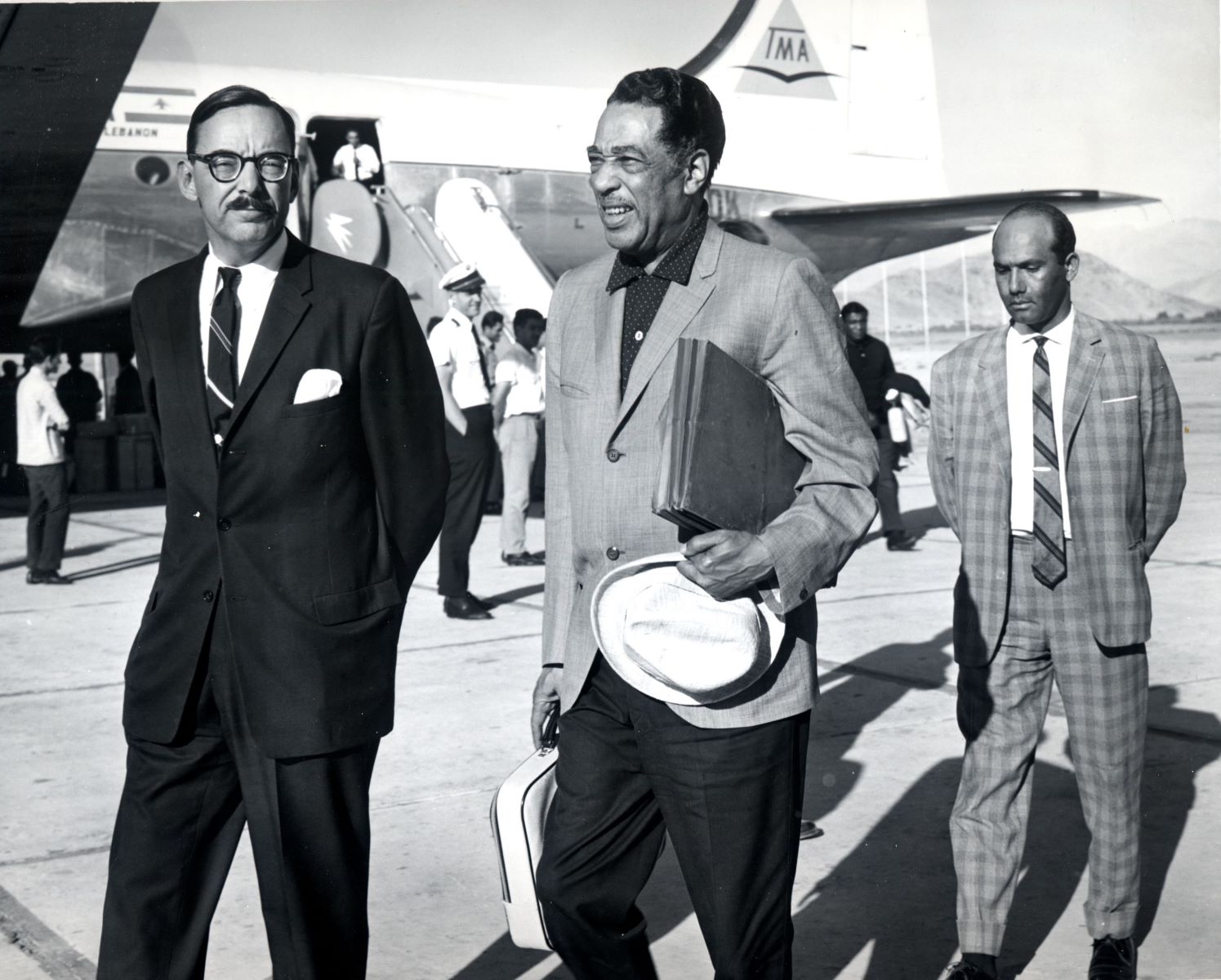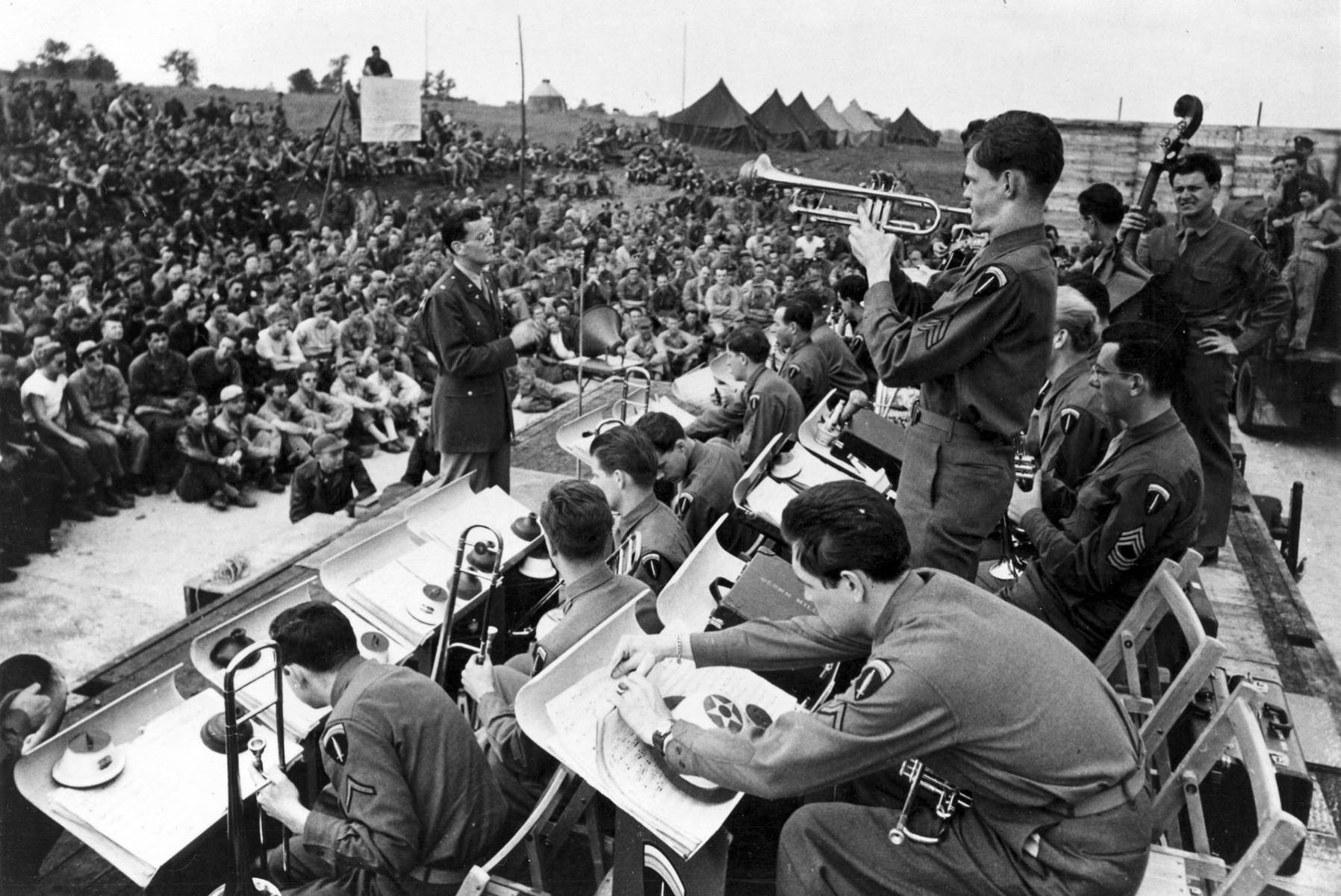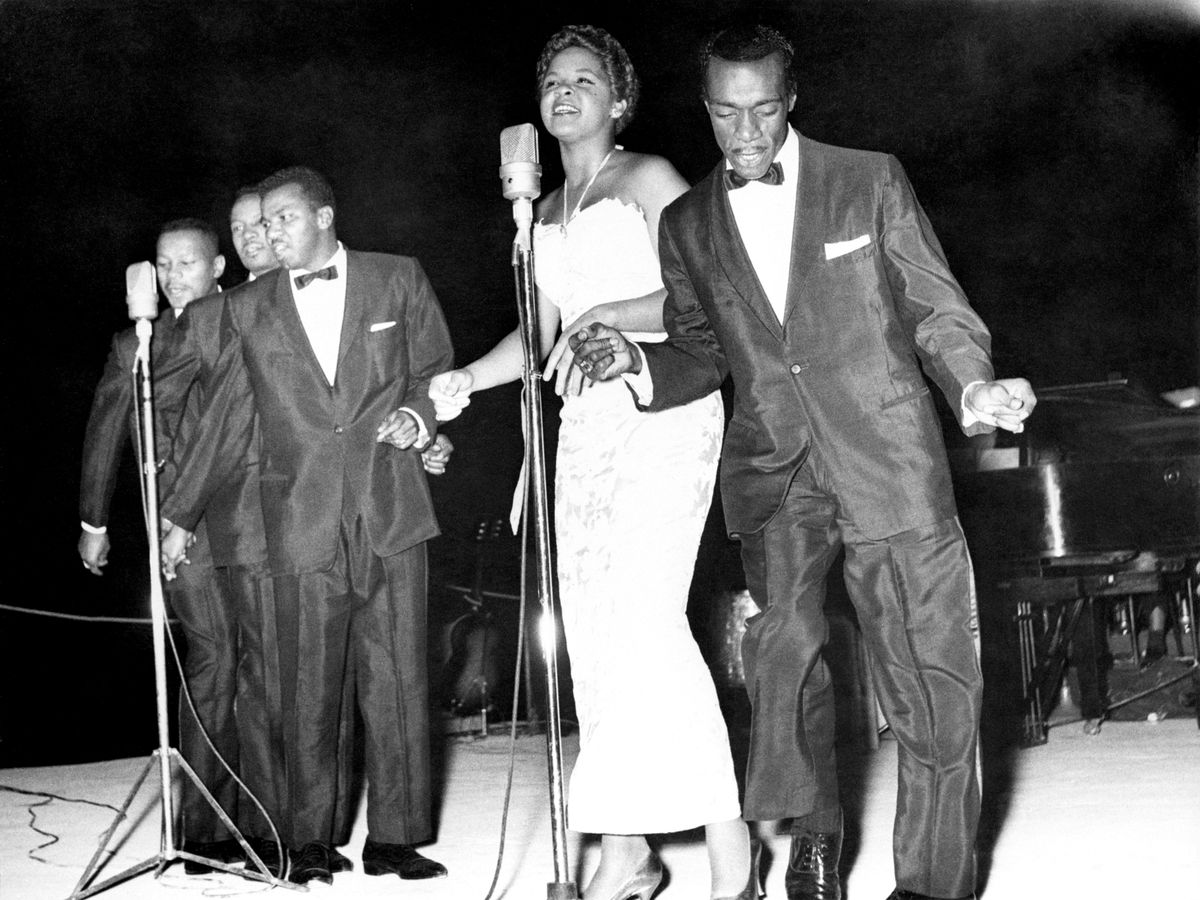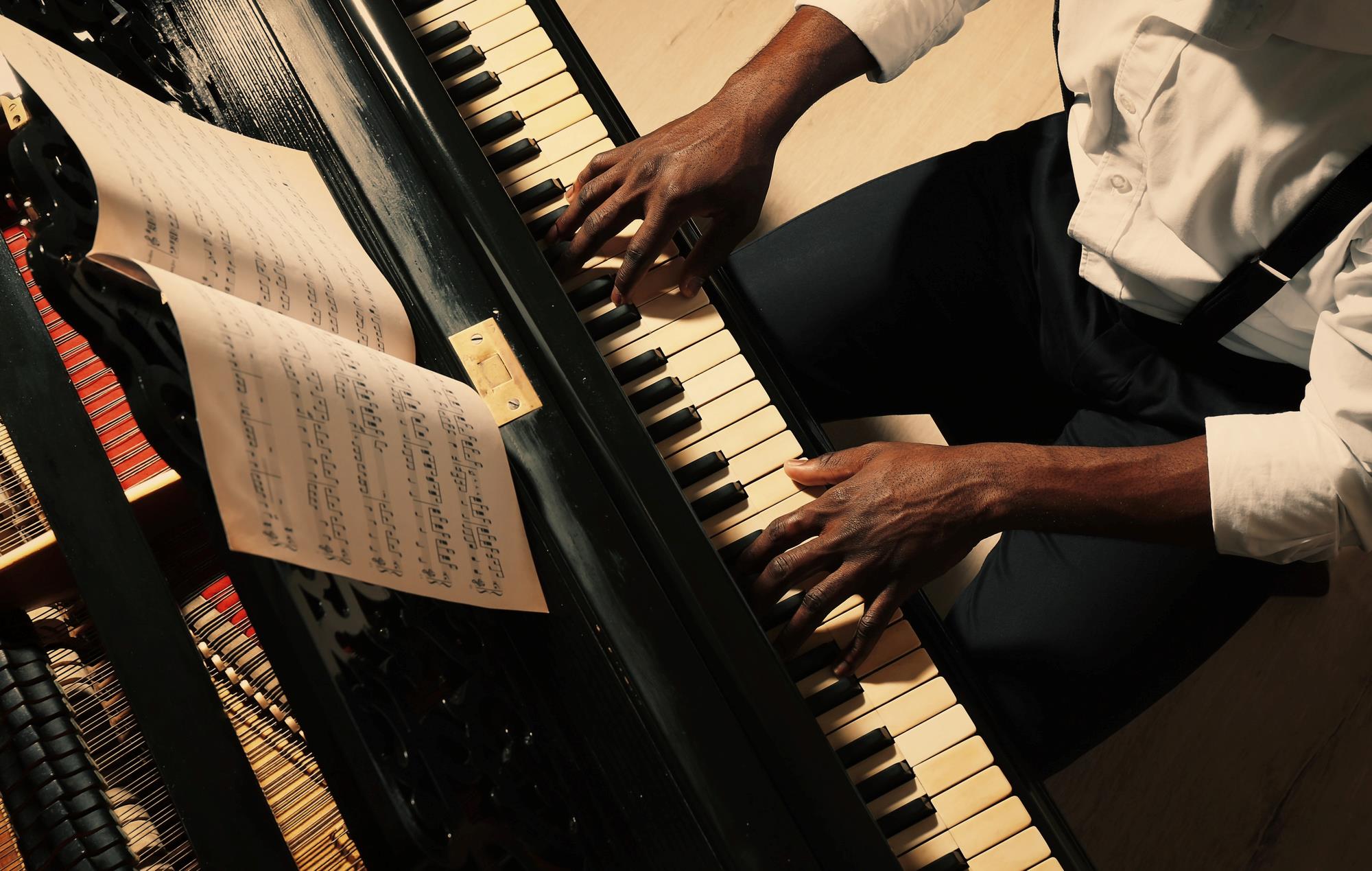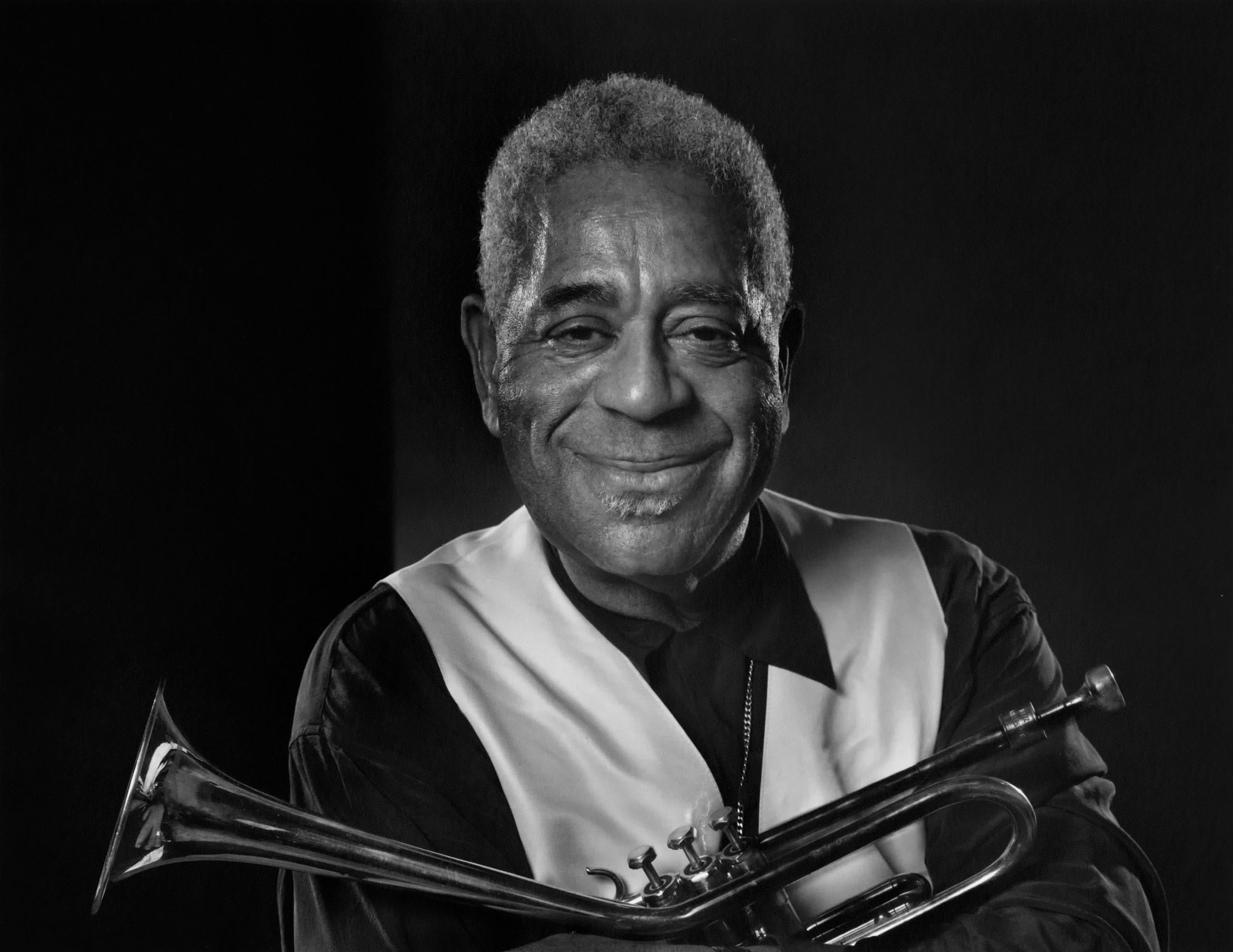

Jazz
What Did Jazz Music Influence
Modified: January 22, 2024
Discover the far-reaching impact of jazz music and its influence on various genres throughout history. Explore the origins, evolution, and legacy of jazz.
(Many of the links in this article redirect to a specific reviewed product. Your purchase of these products through affiliate links helps to generate commission for AudioLover.com, at no extra cost. Learn more)
Table of Contents
- Introduction
- Early Origins of Jazz Music
- Influence on African-American Culture
- Influence on American Popular Music
- Influence on European and International Music
- Influence on Classical Music
- Influence on Modern Music Genres
- Impact on Improvisation and Musical Techniques
- Influence on Civil Rights Movement
- Conclusion
Introduction
Jazz music is a genre that is rooted in African-American culture and has had a significant impact on the development of American popular music. Its unique blend of rhythm, improvisation, and cultural influences has made it a dynamic and influential art form, leaving an indelible mark on music history. Jazz has not only shaped the landscape of music but has also played a crucial role in societal and cultural movements.
This article explores the far-reaching influence of jazz music and how it has impacted various genres and aspects of society. From its early origins and influence on African-American culture to its impact on American and international music, we will delve into the rich and diverse history of jazz and its contributions to the world of music.
By examining the influence of jazz on different musical genres and exploring its role in shaping societal movements like the Civil Rights Movement, we will gain a deeper understanding of the profound impact this genre has had on the world at large. Jazz has not only entertained audiences for decades but has also challenged societal norms, paved the way for new musical techniques, and served as a powerful form of artistic expression.
Join us on this journey as we uncover the vast influence of jazz music and gain a newfound appreciation for this timeless and iconic genre.
Early Origins of Jazz Music
Jazz music originated in the late 19th to early 20th centuries in the African-American communities of New Orleans, Louisiana. It was greatly influenced by African musical traditions, as well as European and Caribbean musical styles. The unique blend of these diverse cultural elements formed the foundation of what would become one of the most influential genres in music history.
The roots of jazz can be traced back to African rhythms and musical practices that were brought over by African slaves. These rhythms were combined with the European instruments such as brass and woodwinds that were commonly used in military bands and dance orchestras at the time. The fusion of African and European musical elements gave rise to a new sound, characterized by syncopated rhythms, improvisation, and call-and-response patterns.
One of the key contributors to the development of jazz was the emergence of the ragtime genre, which incorporated syncopated rhythms and lively melodies. Ragtime pianists such as Scott Joplin and Jelly Roll Morton played a crucial role in popularizing this style. Additionally, the vibrant music scene in New Orleans, with its mix of cultures and musical traditions, provided fertile ground for the growth of jazz. The city’s lively dance halls and proclivity for live music helped to foster the spread of this new genre.
Jazz music truly gained widespread recognition and popularity during the early 20th century. The advent of recording technology allowed jazz artists to share their music with a larger audience, leading to the spread of jazz beyond the borders of New Orleans. It quickly became a national sensation, with jazz bands touring the country and captivating audiences with their skillful improvisation and infectious rhythms.
The early jazz pioneers, such as Louis Armstrong, Duke Ellington, and Jelly Roll Morton, paved the way for this new and vibrant genre. Their innovative approaches to music, along with their virtuosic playing techniques, set the stage for future generations of jazz musicians. Their contributions to jazz music cannot be overstated, as they helped shape its sound and style, creating a legacy that continues to influence musicians to this day.
As we delve deeper into the influence of jazz music, it is important to recognize the rich and diverse history from which it emerged. The early origins of jazz set the stage for a genre that would not only transform the world of music but also leave an indelible mark on society and culture.
Influence on African-American Culture
Jazz music has had a profound impact on African-American culture, serving as a vehicle for self-expression, social commentary, and cultural identity. It has long been recognized as a symbol of African-American resilience, creativity, and artistic excellence.
During the early 20th century, as jazz emerged as a popular genre, it provided a platform for African-American musicians to showcase their talents and gain recognition in an era of racial segregation and discrimination. It became a source of pride and empowerment for the African-American community, highlighting their contributions to the musical landscape.
Jazz music also played a significant role in creating social spaces and fostering a sense of community within African-American neighborhoods. Jazz clubs and venues became gathering places where people could connect, celebrate, and express themselves freely in an environment that nurtured their cultural heritage.
Furthermore, jazz served as a means of cultural expression and storytelling, giving a voice to the experiences and struggles of African-Americans. Through the improvisational nature of jazz, musicians were able to tell their stories and convey emotions that resonated deeply with their audience. The blues, a subgenre of jazz, became particularly important in this regard, as it offered an expressive outlet for African-Americans to address themes of oppression, heartbreak, and resilience.
The influence of jazz on African-American literature, visual arts, and dance cannot be overlooked. The syncopated rhythms, improvisation, and vibrant energy of jazz inspired poets, writers, and painters to explore new avenues of creativity. The Harlem Renaissance, a cultural movement that took place in the 1920s and 1930s, was deeply intertwined with jazz and saw the emergence of African-American artists, writers, and intellectuals who embraced the genre as a form of artistic expression.
Jazz music also played a pivotal role in breaking down racial barriers and promoting social integration. Musicians like Louis Armstrong and Duke Ellington became international ambassadors for jazz, showcasing the immense talent and artistry of African-American performers to audiences worldwide. Their success not only challenged racial stereotypes but also paved the way for future generations of African-American artists to gain recognition and acceptance in the entertainment industry.
Overall, the influence of jazz on African-American culture cannot be overstated. It not only provided a creative outlet for African-American artists but also served as a catalyst for cultural pride, social cohesion, and the breaking down of racial barriers. Jazz continues to be celebrated as a symbol of African-American cultural heritage and an enduring testament to the resilience and creativity of the African-American community.
Influence on American Popular Music
Jazz music has had a profound and lasting influence on American popular music. Its rhythmic complexity, improvisational nature, and unique sound have shaped and defined several genres, paving the way for new musical styles and techniques.
One of the significant ways jazz has influenced American popular music is through its impact on swing music. In the 1930s and 1940s, the swing era brought jazz to the forefront of popular culture. Big bands, led by iconic bandleaders such as Count Basie and Duke Ellington, brought infectious rhythms and melodic improvisations to dance halls and radio airwaves. The swing era not only popularized jazz but also laid the foundation for the evolution of popular music, including the emergence of rock and roll in the 1950s.
The influence of jazz can also be seen in the development of musical genres such as rhythm and blues (R&B) and soul. Artists like Ray Charles, Etta James, and Aretha Franklin incorporated jazz elements into their music, infusing their performances with soulful vocals, melodic improvisations, and sophisticated harmonies. Jazz’s emphasis on individual expression and emotional depth greatly influenced the vocal styles and musical arrangements in R&B and soul, shaping the sound of American popular music for decades.
Furthermore, jazz has played a significant role in the evolution of popular songwriting. The use of chord progressions, harmonic structures, and melodic variations in jazz compositions has influenced songwriters across various genres. Artists like George Gershwin, Cole Porter, and Hoagy Carmichael drew inspiration from jazz in their compositions, infusing their work with a touch of sophistication and improvisational flair.
Jazz’s influence on American popular music can be seen in the development of other genres as well, including funk, fusion, and hip-hop. Funk artists like James Brown and Parliament-Funkadelic incorporated jazz improvisation into their music, creating funky rhythms and grooves synonymous with the genre. Jazz fusion emerged in the 1960s and 1970s, blending jazz with elements of rock, funk, and other genres. Artists like Miles Davis and Herbie Hancock pushed the boundaries of jazz, incorporating electric instruments and experimental techniques. This fusion of styles laid the groundwork for the development of contemporary jazz and influenced the sound of popular music in subsequent decades.
From the swing era to modern-day pop, jazz’s influence on American popular music has been profound and enduring. Its rhythmic intricacies, improvisation, and emphasis on individual expression have shaped and transformed the musical landscape, leaving an indelible mark on the evolution of popular music.
Influence on European and International Music
The influence of jazz music goes far beyond the borders of the United States. It has had a significant impact on European and international music, shaping the development of various genres and inspiring musicians around the world.
One of the ways jazz has influenced European music is through the emergence of genres like gypsy jazz and French jazz. In the early 20th century, the guitar virtuoso Django Reinhardt pioneered the style of gypsy jazz, blending traditional gypsy melodies with the improvisational techniques of jazz. His music not only gained popularity in Europe but also influenced generations of guitarists and became a symbol of European jazz culture. Similarly, in France, the influential musicians of the Hot Club of France, including Django Reinhardt and Stéphane Grappelli, brought jazz to the forefront, infusing it with a distinct European flavor.
In addition to Europe, jazz has also influenced music across the globe. In Latin America, the distinctive rhythms and syncopation of jazz fused with traditional Latin music genres, giving rise to Latin jazz. This genre, popularized by artists like Tito Puente and Machito, incorporated Latin percussion, brass instruments, and Afro-Cuban rhythms into jazz compositions, creating a vibrant and energetic sound that resonated with audiences worldwide.
Jazz’s influence can also be seen in the development of African music genres such as Afrobeat and highlife. Artists like Fela Kuti and E.T. Mensah drew inspiration from jazz, infusing it with traditional African rhythms and melodies to create powerful and politically charged music. The fusion of jazz and African music elements not only created new genres but also provided a platform for social commentary and cultural expression.
Furthermore, in Asia, jazz has made a significant impact on the music scene. In Japan, the love for jazz runs deep, with the country boasting a vibrant jazz culture and a thriving jazz scene. Japanese jazz musicians have embraced the improvisational aspects of jazz and incorporated their own cultural sensibilities, creating a style unique to the country. Jazz has also influenced Indian classical music, with artists like Ravi Shankar and John Coltrane experimenting with the fusion of jazz and Indian ragas, resulting in a mesmerizing blend of musical traditions.
The influence of jazz on European and international music is a testament to its universal appeal and ability to transcend cultural boundaries. Jazz has provided a musical language that musicians around the world have embraced, allowing for the exchange of ideas, the exploration of new sounds, and the creation of innovative musical styles.
Influence on Classical Music
The influence of jazz music extends beyond popular and contemporary genres, making a significant impact on classical music as well. Jazz has provided a source of inspiration for composers and has contributed to the development of new techniques and styles within the classical music realm.
One of the ways jazz has influenced classical music is through the incorporation of jazz elements in compositions. Composers such as George Gershwin, Aaron Copland, and Leonard Bernstein drew inspiration from jazz rhythms, harmonies, and improvisation, infusing these elements into their orchestral works. Gershwin’s “Rhapsody in Blue” and Bernstein’s “West Side Story” are prime examples of how jazz influenced classical compositions, bridging the gap between these seemingly disparate genres and creating innovative and vibrant musical pieces.
Jazz’s impact on classical music can also be seen in the realm of improvisation. While improvisation is a fundamental aspect of jazz, it was not traditionally incorporated into classical music performances. However, with the influence of jazz, classical musicians began to experiment with improvisation during performances. Improvisatory passages became more prominent, allowing performers to showcase their creativity and add a new dimension to classical compositions.
Jazz’s influence on classical music can also be seen in the area of rhythm and syncopation. Jazz’s complex rhythmic patterns and syncopated beats had a profound impact on classical composers, leading them to experiment with unconventional rhythms and rhythmic interplay. This exploration of rhythm in classical compositions added a dynamic and energetic element to the music, infusing it with a sense of groove and pulse.
Furthermore, the influence of jazz on classical music can be observed in the realm of instrumentation. Jazz introduced new instruments and playing techniques into the classical repertoire. Saxophones, once seen as primarily jazz instruments, found their way into classical compositions, adding a distinctive and expressive voice to orchestral and chamber music pieces. Additionally, jazz-inspired techniques such as extended techniques, scat singing, and vocal improvisation have been incorporated into contemporary classical compositions, pushing the boundaries of traditional musical expression.
Jazz’s influence on classical music is a testament to the genre’s ability to evolve and inspire beyond its own boundaries. The cross-pollination of ideas between these two genres has enriched both, leading to a wealth of innovative compositions and performances that continue to resonate with audiences today.
Influence on Modern Music Genres
Jazz music has had a profound influence on modern music genres, shaping their development and contributing to the evolution of popular music. Its unique blend of improvisation, syncopation, and expressive techniques has left an indelible mark on various musical styles.
One genre heavily influenced by jazz is rock and roll. The rhythmic energy and rebellious spirit of early rock can be traced back to the boogie-woogie piano playing and infectious rhythms of jazz. Artists like Chuck Berry and Little Richard incorporated jazz elements into their music, infusing their songs with dynamic guitar riffs and energetic piano solos. The improvisational nature of jazz also inspired rock musicians to experiment with extended instrumental solos and intricate musical arrangements.
Funk music, with its emphasis on tight rhythmic grooves and syncopated beats, owes its roots to jazz. Artists such as James Brown and George Clinton drew inspiration from jazz’s prowess in creating infectious rhythms and incorporated it into their funk compositions. Jazz funk emerged as a genre in the 1970s, blending the improvisation of jazz with the tight, rhythmic foundation of funk, resulting in a powerful and danceable fusion.
Jazz’s influence on hip-hop is also evident. The use of sampling in hip-hop, where snippets of existing recordings are incorporated into new compositions, is akin to the improvisational nature of jazz. Sampling allows hip-hop producers to create unique rhythmic patterns and melodic elements that add depth and texture to their tracks. Additionally, artists like A Tribe Called Quest and The Roots have incorporated live instrumentation and jazz-infused harmonies into their hip-hop compositions, further blurring the lines between the two genres.
Another modern genre influenced by jazz is contemporary R&B. Artists like D’Angelo and Robert Glasper have incorporated jazz harmonies, improvisation, and live instrumentation into their R&B music, creating a sophisticated and soulful sound. Jazz’s emphasis on individual expression and emotional depth resonates with the heartfelt lyrics and soulful vocals of R&B, resulting in a fusion that has captivated audiences worldwide.
Furthermore, jazz’s influence on electronic music should not be overlooked. The exploration of improvisation and experimentation in electronic music mirrors jazz’s approach to music-making. Artists such as Flying Lotus and Jaga Jazzist have successfully combined electronic elements with jazz influences, creating a unique fusion of ambient soundscapes, intricate rhythms, and melodic improvisation.
Jazz’s impact on modern music genres is a testament to its versatility and ability to adapt and inspire. Through its influence on rock, funk, hip-hop, R&B, and electronic music, jazz continues to push musical boundaries and inspire musicians to explore new frontiers of creativity.
Impact on Improvisation and Musical Techniques
Jazz music has had a profound impact on improvisation and musical techniques across various genres. Known for its emphasis on spontaneity and individual expression, jazz has inspired musicians to explore new avenues of creativity and push the boundaries of traditional musical techniques.
Improvisation, a fundamental aspect of jazz, has been embraced by musicians across genres. Jazz improvisers like Louis Armstrong, Charlie Parker, and John Coltrane developed innovative approaches to improvisation, utilizing complex melodic lines, harmonic substitutions, and rhythmic variations. Their groundbreaking improvisational techniques have influenced musicians in other genres, encouraging them to incorporate more improvisation into their own performances.
The influence of jazz can be seen in the development of improvisational techniques in rock, blues, and even classical music. Artists like Jimi Hendrix and Eric Clapton drew inspiration from jazz improvisation, incorporating elements like extended guitar solos and call-and-response patterns into their rock performances. In the blues genre, artists like B.B. King and Stevie Ray Vaughan integrated jazz-inspired techniques, such as bending notes and using chromaticism, into their guitar playing, adding depth and complexity to their solos.
Classical musicians have also embraced improvisation influenced by jazz. By incorporating improvised cadenzas, ornaments, and variations into classical compositions, musicians have been able to infuse their performances with an improvisational energy reminiscent of jazz. Additionally, modern classical composers have drawn inspiration from jazz harmonies and rhythmic sensibilities, integrating these elements into their compositions and expanding the boundaries of traditional classical music.
Jazz has also had a significant impact on musical techniques, particularly in terms of harmony and rhythm. Jazz harmony, with its complex chord progressions and extended chords, has influenced musicians across genres. Artists from The Beatles to Steely Dan have incorporated jazz-inspired harmonies into their compositions, adding sophistication and depth to their music. Additionally, jazz’s rhythmic intricacies, such as syncopation and polyrhythms, have influenced musicians in genres like funk, Latin music, and even electronic music, pushing the boundaries of rhythmic complexity.
Moreover, jazz’s influence on musical techniques extends to instrumental and vocal performance. Jazz instrumentalists, with their virtuosic playing techniques and expressive phrasing, have inspired musicians in other genres to strive for mastery of their instruments and develop unique and personal styles. Jazz vocalists, with their improvisational scatting and dynamic phrasing, have influenced singers in genres like R&B, pop, and soul, encouraging them to experiment with vocal techniques and add a level of spontaneity to their performances.
The impact of jazz on improvisation and musical techniques cannot be overstated. It has liberated musicians, encouraging them to explore new possibilities, break free from traditional constraints, and express their individual voices. Through its influence, jazz has expanded the artistic horizons of musicians across genres, pushing the boundaries of what is possible in music.
Influence on Civil Rights Movement
Jazz music played a significant role in the Civil Rights Movement, serving as a catalyst for change, an expression of resistance, and an unifying voice for equality and social justice. The genre and its musicians became powerful symbols of hope, resilience, and the fight against racial oppression during this pivotal moment in history.
During the height of the Civil Rights Movement in the 1950s and 1960s, jazz musicians used their music as a platform for social and political commentary. Many jazz compositions, such as Max Roach’s “We Insist! Freedom Now Suite” and Charles Mingus’ “Fables of Faubus,” directly addressed issues of racial inequality and segregation. These powerful musical statements not only resonated with audiences but also became anthems of the Civil Rights Movement, inspiring and energizing protestors and activists.
Jazz musicians themselves became outspoken advocates for civil rights. Artists like Nina Simone and Billie Holiday used their platform to amplify the voices of marginalized communities and bring attention to racial injustices. Their passionate performances and emotionally charged lyrics became rallying cries for change, uniting people and galvanizing the movement.
Jazz music also played a significant role in breaking down racial barriers and fostering integration. Many jazz clubs in the United States were key venues for racial integration, where musicians of different racial backgrounds performed together on stage, defying societal norms of segregation. These performances not only showcased the exceptional talent and musicianship of African-American jazz musicians, but they also challenged perceptions and helped foster a greater sense of unity and understanding.
Furthermore, jazz festivals and concerts became important spaces for racial harmony and cultural exchange. Famous events like the Newport Jazz Festival and the Monterey Jazz Festival showcased diverse lineups and provided audiences with an opportunity to experience the music and culture of African-American artists. These festivals became powerful platforms for promoting tolerance, breaking down racial stereotypes, and encouraging dialogue about racial equality.
Last but not least, jazz music served as a source of inspiration and strength for individuals involved in the Civil Rights Movement. Its rhythms, melodies, and improvisation embodied the fighting spirit and resilience of the movement, providing a rallying point for activists. Jazz music became a means of empowerment, a tool for self-expression, and a collective voice for justice.
The influence of jazz on the Civil Rights Movement cannot be overstated. Its ability to communicate powerful messages, challenge societal norms, and foster unity made it an integral part of the fight for civil rights. Jazz musicians and their music served as inspirations and catalysts, helping to pave the way for progress towards equality and social justice for all.
Conclusion
Jazz music’s influence extends far beyond the boundaries of a single genre. It has left an indelible mark on various aspects of music, culture, and society. From its early origins in African-American communities to its impact on American popular music and the global music landscape, jazz has transformed the way we perceive and create music.
Jazz music has not only shaped musical genres but has also played a crucial role in societal movements. It has been a powerful force in African-American culture, providing a platform for self-expression, social cohesion, and cultural identity. Its influence on American popular music is undeniable, with rhythmic complexities, improvisation, and harmonic innovations seeping into genres like rock, funk, R&B, hip-hop, and more.
Internationally, jazz has transcended boundaries and inspired musicians in various parts of the world. Its impact can be seen in the development of genres like gypsy jazz, Latin jazz, and Afrobeat, as well as its influence on classical music and modern electronic music. Jazz’s ability to fuse cultural elements and inspire creativity has made it a universal language of music.
Beyond its musical contributions, jazz music has had a profound impact on social movements like the Civil Rights Movement. Musicians used jazz compositions and performances as a vehicle for social and political commentary, rallying against racial inequality and segregation. Jazz became a symbol of resistance, unity, and hope during a pivotal moment in history.
In conclusion, jazz music is a dynamic and influential genre that has shaped the music industry, influenced cultural movements, and provided a voice to marginalized communities. Its impact on improvisation, musical techniques, and social change is evident in the countless genres and musicians it has inspired. Jazz continues to captivate audiences with its vibrant rhythms, soulful melodies, and spirit of innovation. As we reflect on its rich history and enduring influence, we are reminded of the power and transcendence of music, and the tremendous impact it can have on individuals and society as a whole.



